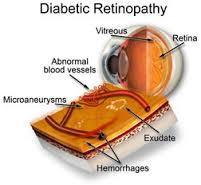infography
15/02/2014Boundaries into Remote Communities: An Exploration of Experiences with Telehealth Chronic Disease Self-Management Programs in Rural Northern Ontario, Canada
15/02/2014Comparing the Effectiveness of Telemedicine and Traditional Surveillance in Providing Diabetic Retinopathy Screening
From « Telemedicine and e-Health »
Comparing the Effectiveness of Telemedicine and Traditional Surveillance in Providing Diabetic Retinopathy Screening Examinations: A Randomized Controlled Trial
To cite this article:
Steven L. Mansberger, Ken Gleitsmann, Stuart Gardiner, Christina Sheppler, Shaban Demirel, Kathleen Wooten, and Thomas M. Becker. Telemedicine and e-Health. December 2013, 19(12): 942-948. doi:10.1089/tmj.2012.0313.
Published in Volume: 19 Issue 12: December 4, 2013
Abstract
Objective: To determine the effectiveness of telemedicine for providing diabetic retinopathy screening examinations compared with the effectiveness of traditional surveillance in community health clinics with a high proportion of minorities, including American Indian/Alaska Natives. Subjects and Methods: We conducted a multicenter, randomized controlled trial and assigned diabetic participants to one of two groups: (1) telemedicine with a nonmydriatic camera or (2) traditional surveillance with an eye care provider. For those receiving telemedicine, the criteria for requiring follow-up with an eye care provider were (1) moderate nonproliferative diabetic retinopathy or higher, (2) presence of clinically significant macular edema, or (3) “unable to grade” result for diabetic retinopathy or macular edema. Results: The telemedicine group (n=296) was more likely to receive a diabetic retinopathy screening examination within the first year of enrollment compared with the traditional surveillance group (n=271) (94% versus 56%, p<0.001). The overall prevalence of diabetic retinopathy at baseline was 21.4%, and macular edema was present in 1.4% of participants. In the telemedicine group, 20.5% would require further evaluation with an eye care provider, and 86% of these referrals were because of poor-quality digital images. Conclusions: Telemedicine using nonmydriatic cameras increased the proportion of participants who obtained diabetic retinopathy screening examinations, and most did not require follow-up with an eye care provider. Telemedicine may be a more effective way to screen patients for diabetic retinopathy and to triage further evaluation with an eye care provider. Methods to decrease poor quality imaging would improve the effectiveness of telemedicine for diabetic retinopathy screening examinations.
[See download of complete article]
See on online.liebertpub.com




